The Qur'an and Mountains
This article analyzes the apologetic claim that the Qur'an is validated by the geological science concerning mountains.
Introduction
Many articles have been written in response to the claim that the Qur'an is validated by the geological science concerning mountains. This article adds to these by addressing several newer points that have been adopted to justify the original claim or to evade contrary scientific evidence.
Due to what some refer to as the ‘richness of the Arabic language,’ apologists such as I. A. Ibrahim have been able to use the vague interpretations of several Qur'anic verses in their attempt to prove the scientific validity of the Qur'an. In this, they are backed by a Muslim geologist specializing in biostratification, Professor Zaghloul Raghib El Naggar, and a western surgeon, Dr. Maurice Bucaille.
Apologists' Debating Technique
There are two elements to this claim that the Qur'an had foreshadowed the scientific knowledge concerning mountains:
- Mountains are pegs.
- Mountains stabilize the crust or the earth.
Some of the tactics that are used to argue their case are as follows:
- If a word has multiple meanings or translations, they will choose the one that suits them best at the time, ignoring all the rest as if they never existed.
- If unable to come up with a valid response, they will claim that only a genuine intimacy with Classical Arabic will enable the proper understanding of a given verse and then, rather ironically, proceed to argue in the English language.
- They will add complexity to an otherwise ‘simple’ verse without explanation nor justification. An example is the extension from ‘peg’ to ‘isostacy’ to ‘stabilize the crust/lithosphere/earth’.
- They will switch from the ‘literal’ to ‘metaphorical’ case whenever convenient. A sure sign of loss will be when they claim that the Qur'an is not a book of Science but Scripture, despite previously or concurrently promulgating the validity of ‘Qur'anic Science’.
Relevant Verses and Terms
The relevant Qur'anic verses are:
Pickthal: He hath created the heavens without supports that ye can see, and hath cast into the earth firm hills, so that it quake not with you; and He hath dispersed therein all kinds of beasts. And We send down water from the sky and We cause (plants) of every goodly kind to grow therein.
Shakir: He created the heavens without pillars as you see them, and put mountains upon the earth lest it might convulse with you, and He spread in it animals of every kind; and We sent down water from the cloud, then caused to grow therein (vegetation) of every noble kind.
Sher Ali: HE has created the heavens without any pillars that you can see, and HE has placed in the earth firm mountains that it may not quake with you, and HE has spread therein all kinds of creatures; and WE have sent down water from the clouds, and have caused to grow therein of every fine species.
Khalifa: He created the heavens without pillars that you can see. He established on earth stabilizers (mountains) lest it tumbles with you, and He spread on it all kinds of creatures. We send down from the sky water to grow all kinds of beautiful plants.
Palmer: He created the heavens without pillars that ye can see, and He threw upon the earth firm mountains lest it should move with you; and He dispersed thereon every sort of beast; and we send down from the heavens water, and we caused to grow therein of every noble kind.
Sale: He hath created the heavens without visible pillars [to sustain them], and hath thrown on the earth [mountains] firmly rooted, lest it should move with you; and he hath replenished the same with all kinds of beasts: And we send down rain from heaven, and cause every kind of noble [vegetable] to spring forth therein.
Rodwell: Without pillars that can be seen hath He created the heavens, and on the earth hath thrown mountains lest it should move with you; and He hath scattered over it animals of every sort: and from the Heaven we send down rain and cause every kind of noble plant to grow up therein.
“Progressive Muslims”: He created the heavens without pillars that you can see. And He placed in the earth firm stabilizers so that it would not tumble with you, and He spread on it all kinds of creatures. And We sent down water from the sky, thus We caused to grow all kinds of good plants.
Transliteration: Khalaqa alssamawati bighayri AAamadin tarawnaha waalqa fee al-ardi rawasiya an tameeda bikum wabaththa feeha min kulli dabbatin waanzalna mina alssama-i maan faanbatna feeha min kulli zawjin kareeminPickthal: And We have placed in the earth firm hills lest it quake with them, and We have placed therein ravines as roads that haply they may find their way.
Shakir: And We have made great mountains in the earth lest it might be convulsed with them, and We have made in it wide ways that they may follow a right direction.
Sher Ali: And WE have placed in the earth firm mountains lest it should quake with them; and WE have made therein wide pathways, that they may be rightly guided.
Khalifa: And we placed on earth stabilizers, lest it tumbles with them, and we placed straight roads therein, that they may be guided.
Palmer: And we placed on the earth firm mountains lest it should move with them, and He made therein open roads for paths, haply they may be guided!
Sale: And we placed stable [mountains] on the earth, lest it should move with them; and we made broad passages between them for paths, that they might be directed [in their journeys]:
Rodwell: And we set mountains on the earth lest it should move with them, and we made on it broad passages between them as routes for their guidance;
“Progressive Muslims”: And We made on the earth stabilizers so that it would not tumble with you, and We made in it wide paths that they may be guided.
Transliteration: WajaAAalna fee al-ardi rawasiya an tameeda bihim wajaAAalna feeha fijajan subulan laAAallahum yahtadoonaPickthal: And He hath cast into the earth firm hills that it quake not with you, and streams and roads that ye may find a way.
Shakir: And He has cast great mountains in the earth lest it might be convulsed with you, and rivers and roads that you may go aright,
Sher Ali: And HE has placed in the earth firm mountains lest it quake with you and rivers and routes that you may find the way to your destination.
Khalifa: And He placed stabilizers (mountains) on earth, lest it tumbles with you, as well as rivers and roads, that you may be guided.
Palmer: And He has cast firm mountains on the earth lest it move with you; and rivers and roads; haply ye may be guided.
Sale: And he hath thrown upon the earth [mountains] firmly rooted, lest it should move with you, and [also] rivers, and paths, that ye might be directed:
Rodwell: And He hath thrown firm mountains on the earth, least it move with you; and rivers and paths for your guidance,
“Progressive Muslims”: And He has cast into the earth stabilizers so that it does not sway with you, and rivers, and paths, perhaps you will be guided.
Transliteration: Waalqa fee al-ardi rawasiya an tameeda bikum waanharan wasubulan laAAallakum tahtadoonaPickthal: Have We not made the earth an expanse, And the high hills bulwarks?
Shakir: Have We not made the earth an even expanse? And the mountains as projections (thereon)?
Sher Ali: Have WE not made the earth as a bed, And the mountains as pegs?
Khalifa: Did we not make the earth habitable? And the mountains stabilizers?
Palmer: Have we not set the earth as a couch, and the mountains as stakes,
Sale: Have we not made the earth for a bed, and the mountains for stakes [to fix the same]?
Rodwell: Have we not made the Earth a couch? And the mountains its tent-stakes?
“Progressive Muslims”: Did We not make the earth a resting ground? And the mountains as pegs?
Transliteration: Alam najAAali al-arda mihadan Waaljibala awtadanPickthal: And the earth have We spread out, and placed therein firm hills, and caused each seemly thing to grow therein.
Shakir: And the earth -- We have spread it forth and made in it firm mountains and caused to grow in it of every suitable thing.
Sher Ali: And the earth have WE spread out, and set therein firm mountains and cause every thing to grow therein in proper proportion.
Khalifa: As for the earth, we constructed it, and placed on it stabilizers (mountains), and we grew on it a perfect balance of everything.
Palmer: And the earth we have stretched out and have thrown on it firm mountains, and have caused to grow upon it of everything a measured quantity.
Sale: We have also spread forth the earth, and thrown thereon stable [mountains]; and we have caused every kind of [vegetable] to spring forth in the same, according to a determinate weight:
Rodwell: And the Earth have We spread forth, and thrown thereon the mountains, and caused everything to spring forth in it in balanced measure:
“Progressive Muslims”: And the land We have stretched, and placed stabilizers in it, and We have planted in it everything in balance.
Transliteration: Waal-arda madadnaha waalqayna feeha rawasiya waanbatna feeha min kulli shay-in mawzooninThe relevant Arabic terms are: awtad for pegs/bulwarks/stabilizers/ projections;[1] rawasiya for mountains, and tameeda for tumble/shake/quake/convulse/sway etc.[2]
Wehr translates this word as unshakable mountains. The Munjid says (al-jibal al-thawabat al-ruwasikh) firmly established, fixed mountains. The word comes from the root (arsa), the same root used for the Arabic word for anchor. To throw out or cast the anchor is (alqa almirsah). So instead of "cast the anchor to keep the ship from moving", we have "cast the mountains to keep the earth from shaking."[2]
Dr. Zakir Naik translated awtad as stakes or pegs (like those used to anchor a tent).[1]
The most pertinent verse is 16:15 transliterated as follows:
- Waalqa fee al-ardi rawasiya an tameeda bikum waanharan wasubulan laAAallakum tahtadoona.
Note the verse uses the word 'ard' which can be used to describe the Earth, its surface, or the ground in general, an example of apologetic language vagueness – meaning that it can refer to anything from the Earth, the crust, the lithosphere, the mantle or any combination of the above that suits the apologist's argument at the time.
Also note that the word ‘tameeda’ is claimed to refer to shaking or disturbance, as opposed to ‘zalzala’ which means ‘earthquake.’ A further dissection of this term will be given later.
Other interpretations of verse 21:31 are as follows:
Daryabadi: And We have placed in the Earth firm mountains lest it should move away with them...
Hilali & Khan: And We have placed in the Earth firm mountains lest it should shake with them...
Al-Muntakhab: And We furnished the Earth with firm stays, mountains placed in a certain setting, fixed as with an anchor, to stabilize it lest it should sway you from side to side or in all directions...
Sarwar: We placed firm mountains on Earth lest it would shake them away...
Asad: And We have set up firm mountains on Earth lest it sway with them...There is another verse that may suggest that Mountains have roots, but only when apologists choose to use a certain definition in a typically vague verse:
Pickthal: They will ask thee of the mountains (on that day). Say: My Lord will break them into scattered dust.
Shakir: And they ask you about the mountains. Say: My Lord will carry them away from the roots.
Sher Ali: And they ask thee concerning the mountains. Say, `My Lord will break them into pieces and scatter them as dust;
Khalifa: They ask you about the mountains. Say, "My Lord will wipe them out.
Palmer: They will ask thee about the mountains; say, 'My Lord will scatter them in scattered pieces,
Sale: They will ask thee concerning the mountains: Answer, my Lord will reduce them to dust, and scatter them abroad;
Rodwell: And they will ask thee of the mountains: SAY: scattering my Lord will scatter them in dust;
"Progressive Muslims": And they ask you about the mountains, say: "My Lord will annihilate them completely."
Transliteration: Wayas-aloonaka AAani aljibali faqul yansifuha rabbee nasfanMany translations translate the word 'yansifuha' as wipe out, break, carry away, annihilate, destroy, and crush, but apologists will prefer the meaning, ‘uproot’, as the Yusuf Ali and Al-Muntakhab versions have done.
Discussion
A summary of the apologetic case is as follows:
Mountains have deep roots thus they resemble ‘pegs’
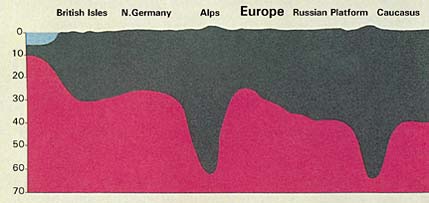
The above schematic diagram is taken from "Anatomy of the Earth", Cailleux, p. 220, and is cited by various Islamic websites.[3]
Superficially it would seem they have a point. Verse 78:6-7 says, “Have We not made the earth as a wide expanse, And the mountains as pegs?”
They point to the fact of isostacy where the bulk of the mountain extends into the upper mantle as proof that Prophet Muhammad could not have known that mountains were ‘pegs’ staking the crust to the upper mantle unless Allah told him.
Sounds convincing? Herein lies the genius of the Qur'an – to make definitions so vague as to provide apologists with sufficient ‘wriggle room’.
Analysis
What they fail to provide is the accompanying description given directly above the schematic diagram,[4] pointing out that the vertical scale has been greatly exaggerated.

The following pictures from the same Islamic sites[3] resemble ‘very blunt’ pegs. In fact, they resemble pegs only with imagination.
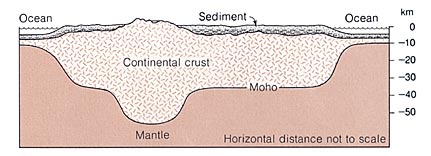

The observation here is that they equate ‘deep mountain roots’ with ‘pegs’. There are several difficulties with this interpretation in that not all mountains have peg-like roots. An analysis of mountain formation reveals the fact that not all mountains have peg-like roots, for example volcanoes; those formed by extension and faulting (e.g. the Nevada Basin and Range); thrust and fold belts (e.g. Appalachians, Eastern Bolivian Andes, Zagros Mountain, the Calcareous Alps). A cross-section of the collisional Himalayas reveals a broad ‘wedge’ rather than Cailleux’s schematic ‘peg’ diagram,[5] as do the Pyrenees.[6]
The diagram below is a true scale cross section of the Andes mountain range. The mountains and their “roots” (which do not resemble “pegs” in the slightest) are in yellow.
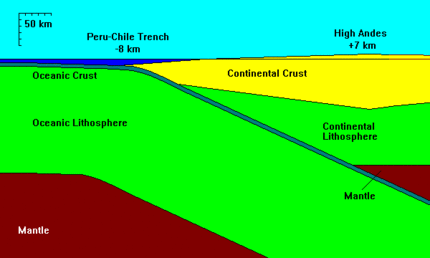
Therefore it appears likely that they are mistaken when claiming mountains are pegs in the literal sense. They base their claims on a single, greatly exaggerated, schematic diagram and not from a more comprehensive survey of mountain types and genuine geological data.
For these reasons, it can be conceded that mountains are pegs only in the metaphorical sense, but definitely not in the literal sense.
They also seem incredulous that Muhammad should have known that mountains have 'roots', arguing that since the bulk of the mountain is below ground it is unobservable. Muhammad could only have referred to mountain roots (like pegs) from a divine source. However, this may not be true since ancient people already knew mountains have roots. For example, the ancient Hebrews seemed to have acquired this knowledge.
Deep roots stabilize the earth (or mountain roots act as pegs)
Analysis
The author of this proposition seems to have confused Cause with Effect. In his example of continental-collisional type mountains, he failed to see that mountains are caused by tectonic plate collision and do not effect plate stabilization.
It is possible that the reason why lithospheric plates come to a (slow) halt is not due to mountains but due to the opposing plates. The author's proposition is akin to saying that in an automobile collision, the crushed engine compartment stabilizes the car during the crash. In reality, the crushed engine compartment (analogy = mountain) is the effect of the crash (analogy = tectonic plate collision). It does not stabilize the car during the collision.
In short, there is no scientific evidence that continental-collisional type mountains stabilize tectonic plates. All assertions to this effect are mere opinion without scientific foundations.
Mountains stabilize the earth because plate movements are impeded by their formation
Analysis
Professor El Naggar also seems to have confused Cause and Effect. Plate motions are almost completely halted not by collisional-type mountain formation (effect) but by the opposing plates.
Further, this is merely Professor El Naggar’s opinion – a search of the his CV has singularly failed to find refereed scientific proof of his assertion. In fact, El Naggar’s scientific career is built on the study of biostratification, not on the evidence that mountains stabilize continental masses. The only references to Professor El Naggar on mountains are un-refereed Islamic conferences on supposed Islamic Science.[8]
Therefore, El Naggar’s opinion is a classical example of the logical fallacy of Argumentum Ad Verecundiam.
If one were to accept such argumentum ad verecundiam, one would also have to accept Professor David A. Young’s opinion:
In other words, mountains do not keep the earth from shaking. Their formation caused and still causes the surface of the earth to shake.
Mountain stabilize the lithospheric plates by sinking into the asthenosphere
Analysis
Again, this is only Professor El Naggar’s opinion and a confusion of cause and effect. To date, no one has provided the scientific evidence derived by Professor El Naggar or anyone else to prove mountains actually stabilize the lithospheric plates.
The available scientific evidence is that the continental plates are stabilized by craton keels. These are deep (60-300km) extensions of cratons into the mantle (far deeper than mountain roots). The formation of these craton roots or keels are unrelated to mountain formation.[9]
In fact, cratons are stable regions of the earth's crust that are no longer subject to mountain building processes. These craton roots or keels were formed by depletion of basaltic elements into the asthenosphere, leading to less dense material that sinks deeper into the mantle due to the lower buoyancy (i.e. isostacy {of the crust, not mountains} at work). [10]
Mountains prevent earthquakes
Analysis
As early as the 1920s, scientists noted that earthquakes are concentrated in very specific narrow zones (Wadati-Benioff zones). In 1954, French seismologist J.P. Rothé published this map showing the concentration of earthquakes along the zones indicated by dots and cross-hatched areas.[11]
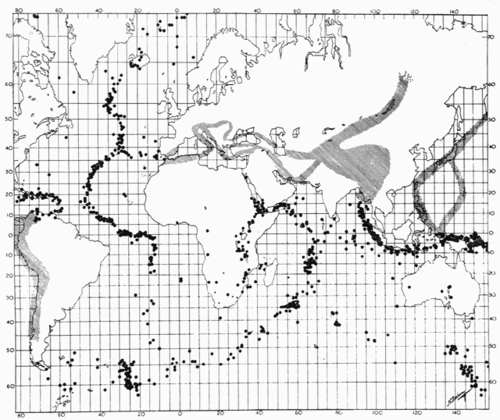
Note how the earthquakes originate mainly from the edges of tectonic plates, including collisional mountain ranges and ocean trenches and ridges, thus suggesting that mountains do not stabilize the crust or the earth.
Further evidence is provided by a detailed look at the Himalayan mountain range which shows that it is closely associated with earthquakes, thus proving mountains do not prevent earthquakes.
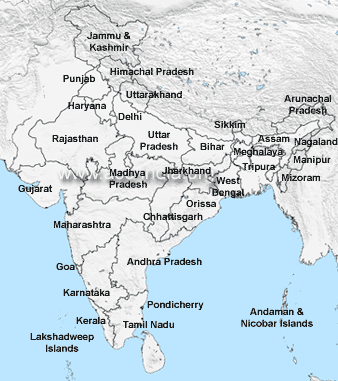
Amateur Seismic Centre
Therefore it seems the collision of tectonic plates causes mountains to form and this collision also causes earthquakes.
Amateur Seismic Centre
Scientists have also proven that other mountain ranges to be earthquake zones, including the Andes[12] and the African mountains.[13]
Does the claim that mountains prevent earthquakes stand up to scientific evidence? Clearly it does not. In fact, the largest earthquakes, particularly the largest 2, ever recorded are associated with mountainous regions.[14]
No. 1: The great Chilean earthquake occurring 140 kms SSW of Concepción (Biobio), Chile, registered 9.5Mw – the largest earthquake ever recorded. The Andes mountain range did nothing to prevent or stabilize this earthquake.
No. 2: The Prince William Sound earthquake occurring 33.2 kms SE of Mt. Goode (Alaska), U.S.A., registered 9.2Mw - the second biggest earthquake recorded in the 20th century. Mt Goode did not stabilize this earthquake.
No. 6: The Ecuador earthquake occurring 138 kms W of Tortuga (Esmeraldas Province), Ecuador, registered 8.8Mw. The nearby Andes mountain range did not prevent or stabilize this earthquake.
No. 8: The Arunachal Pradesh occurring 20.7 kilometers NW of Tajobum (Arunachal Pradesh), India registering 8.6Mw. This is in the Assam hills and caused landslides in the mountains.
Let’s examine the case of the largest earthquake ever recorded; the Chilean earthquake of 1960:
1960 May 22 19:11:14 UTC
Magnitude 9.5
The Largest Earthquake in the World
More than 2,000 killed, 3,000 injured, 2,000,000 homeless, and $550 million damage in southern Chile; tsunami caused 61 deaths, $75 million damage in Hawaii; 138 deaths and $50 million damage in Japan; 32 dead and missing in the Philippines; and $500,000 damage to the west coast of the United States.
U.S. Geological Survey, March 29, 2010
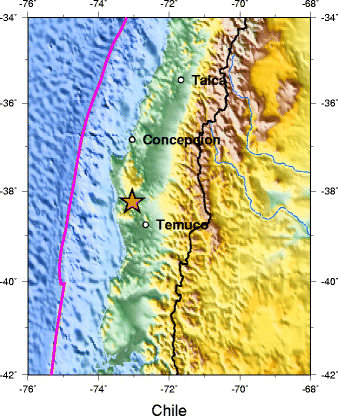
The Andes Mountains did not seem to prevent or stabilize this earthquake. In fact, it is the collision between the Nazca and South American tectonic plates that causes these earthquakes and raises the Andes mountains.
Earth Science From Moorland School
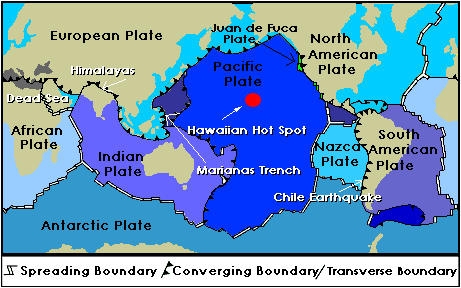
Hence the proposition that mountains prevent earthquakes is false.
Mountains stabilize the earth through isostacy
Analysis
This is a classical misconception of George Airy’s model of Isostacy and the logical fallacy of “Composition” (i.e. generalization of the specific case to the general). Just because the mountains are themselves stabilized by isostacy does not mean that the mountains stabilize the earth or the crust by isostacy. Every element in the earth’s crust is governed by the same physical laws – in fact the crust ‘floats’ on the upper mantle and is thus self-stabilizing according to its own isostacy, not that of mountains.
David Smith, Director of Professional Development, MadSci Network, Earth Sciences, March 14, 2004
Therefore, isostacy stabilizes mountains. Isostacy also stabilizes the earth's crust. However, mountains do not stabilize the crust through isostacy. The crust stabilises itself through its own isostacy. Therefore, the stability of the crust, through 'crustal' isostacy, has nothing to do with mountains. It is only wishful thinking to extend this 'mountain-specific' isostacy to the crust (which has its own isostacy) because isostacy is an independent 'force or phenomenon' acting on the mountains as it independently does on the crust.
The term ‘tameeda’ does not refer to earthquakes but to shaking or disturbances
When shown evidence that collisional-type mountains are associated with earthquakes some Muslims will then claim that the Qur'anic verses do not refer to earthquakes at all. They will claim that tameeda also means stagger, roll, sway, or tilt, and that there's significant difference between them and the short sharp shock of an earthquake (i.e. tameeda refers to some phenomenon, assumed to be associated with geological timescale, that is presently unknown to and undefined by our present understanding of geological science).
Analysis
The relevant verses are as follows:
The phrase "tamida bi" from mada, yamidu, is only used in the above three Qur'anic verses which are marked **. Hans Wehr's "Dictionary of Modern Written Arabic" gives the meaning of the verbal phrase "mada bi" as: to shake something violently. "Mada bi" is the very form used in these verses.
It is clear that the term ‘tameeda’ is associated with people (i.e. less it should shake with you). Thus, tameeda cannot possibly refer to shaking in a geological timescale as people do not live in geological timescales. For this reason, tameeda and zalzala are synonyms, just as the English terms ‘seismic activity’ and ‘earth tremors’ are synonyms for earthquakes.
Even some Muslim commentators do not consider tameeda to mean shaking in geological timescale.
Tafsir Ibn Kathir
Admittedly Ibn Kathir was not a geologist, but he certainly knew Classical Arabic and his reading of the relevant verses suggests that tameeda is not associated with a geological timescale.
The word, ‘stabilize’ does not mean ‘prevent earthquakes’
Apologists claim that the stabilization is over a geological timescale because of the term ‘tameeda’ as opposed to ‘zalzala’.
Analysis
For the same reason as the previous section, the term ‘stabilize’ must mean ‘prevent earthquakes’ as tameeda cannot be associated with geological timescales.
Apologists who make this claim also fail to notice that mountains, whether individually or as a mountain range, do not last very long in geological timescales. Wind, water and ice erode them away, or even tectonic movements can destroy them. Now it is worth pondering what kind of stability the relatively short-lived mountains can provide to the 4.5 billion years old earth, if there is anything miraculous that the Qur'an says about mountains.
Mountains Stabilize the Earth's Rotation About its Axis
The mass of the Earth is 5.97*1024 kilograms. The mass of mountains is of a much lower order. Hence they have an infinitesimally small effect on the earth's moment of inertia. In fact, the earth's rotational speed and axial tilt are affected more by the distance of the moon from earth and the post-glacial rebound since the ice ages.
Mountains Absorb Some Waves During Earthquakes
Studies like this one are sometimes quoted by apologists to prove their point. It is clear however, that earthquakes are not prevented. Only the waves are somewhat affected by the presence of mountains as the above simulation suggests. If there were an earthquake larger than Mw 7.5 or if a human settlement were situated between its epicenter and a mountain range, there would be widespread destruction anyway.
Conclusion
The claim that mountains are pegs is untrue as not all mountains have "peg-like" roots. And even the ones that can be claimed to have these peg-like roots, resemble pegs only with a lot of imagination. The claim that mountains stabilize the crust or the earth is (at best) unproven. There is no scientific evidence for this assertion, therefore the Qur'an cannot be validated by scientific evidence that does not exist.
The mere fact of isostacy is not proof that mountains stabilize the crust or the earth. The mere fact that collision-type mountains are formed at the edges of tectonic plates is not proof that mountains stabilize the plates. The mere fact that mountains have deep roots is not proof that mountains stabilize anything.
Lastly, is the Qur'an really the first scripture to make the assertion that Mountains stabilize the earth? Well, some Christians do not think so,[15] and the Bible predates the Qur'an by at least 400 years.
See Also
- Qur'an Predicted Land Decreasing
- I. A. Ibrahim - A hub page that leads to other articles related to I. A. Ibrahim
References
- ↑ 1.0 1.1 1.2 Dr. Zakir Naik - The Quran and Modern Science: Compatible Or Incompatible? - Islamic Research Foundation
- ↑ 2.0 2.1 Dr. William Campbell - The Qur'an and the Bible in the light of history and science - PP. 170 - 182
- ↑ 3.0 3.1 A Brief Illustrated Guide to Understanding Islam/ B) The Quran on Mountains - Islam-Guide.com, accessed October 1, 2011
- ↑ Click here for a more complete view of the page scan.
- ↑ Dèzes, Pierre (1999) - Tectonic and metamorphic Evolution of the Central Himalayan Domain in Southeast Zanskar (Kashmir, India) - Mémoires de Géologie. Doctoral thesis (Universite de Lausanne) 32: 149. ISSN 1015-3578
- ↑ Jaume Vergés, Manel Fernàndez, Albert Martìnez - The Pyrenean orogen: pre-, syn-, and post-collisional evolution - Journal of the Virtual Explorer, Electronic Edition, ISSN 1441-8142, volume 8, paper 4, doi:10.3809/jvirtex.2002.00058
- ↑ 7.0 7.1 Dr. Zaghlool El-Naggar PhD - The Mountains as Stabilizers for the Earth - September 24, 2002
- ↑ Curriculum Vitae of Professor DR. Z H. M. El-Na ggar - Elnaggarzr.com
- ↑ Jordan, T. H., Nature, 1978, 274, 544–548; Elasser, W. M., in The Application of Modern Physics to Earth and Planetary Interiors (ed. Runcorn, S. K.), Interscience, New York, 1969, pp. 223– 240; Morgan, W. J., J. Geophys. Res., 1968, 73, 1959–1970
- ↑ Sankaran, A.V. - CURRENT SCIENCE - VOL. 81, NO. 9, 10 NOVEMBER 2001 pp. 1158-1160
- ↑ Earthquake zones - U.S. Geological Survey
- ↑ Andes mts. - Volcanism and Plate Techtonics
- ↑ Earthquake Risk Alert for Africa's Mountain Regions - United Nations Environment Programme, May 6, 2002
- ↑ 10 Largest Quakes - Worldwide - Amateur Seismic Centre
- ↑ Pillars of the Earth - Institute for Biblical & Scientific Studies, April 30, 2008